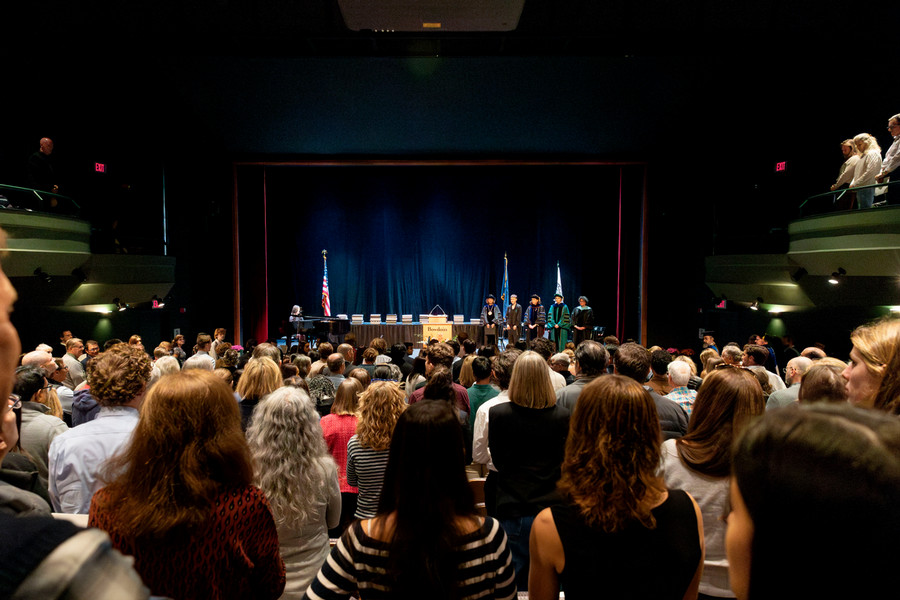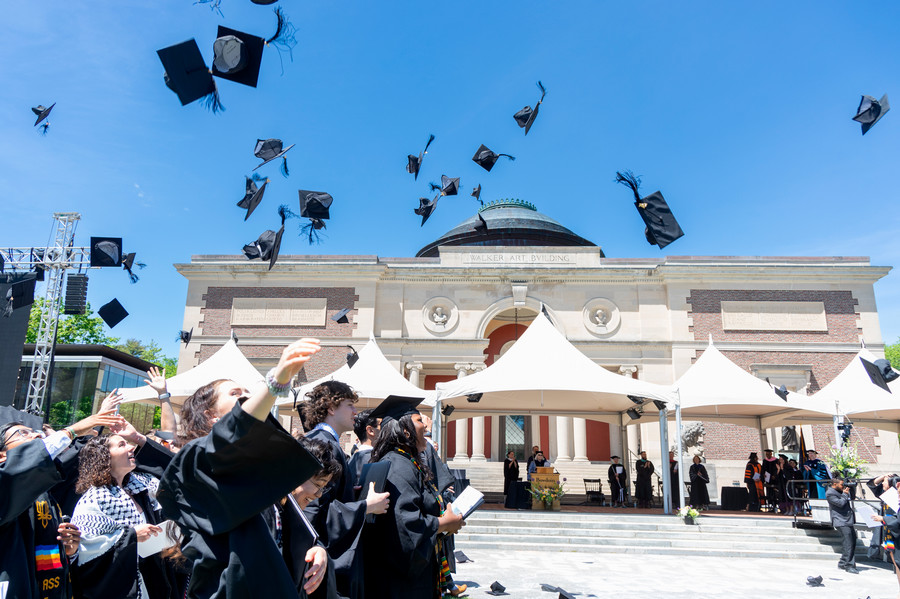Barry Mills on the Future of Brunswick

Tuesday’s announcement that the Brunswick Naval Air Station will be renamed “Brunswick Landing” reminds me of the remarkable change that has taken place in this community over recent years. It also reminds everyone here of the challenges ahead for “Maine’s Largest Town.”
I recall vividly the first time I saw Brunswick and Bowdoin. It was a snowy day in the fall of 1967, and I had driven up from my home in Rhode Island with my parents to look at the College. The snowflakes were huge—the largest I had ever seen—and the place had a magical feel. Later, as a student, I remember thinking the drifts downtown on Maine Street were gigantic.
Back in those days, Brunswick was a much different place than it is today. Brunswick used to be known as a “gateway” to Down East Maine, and while that was certainly a catchy slogan, it suggested that most folks were simply passing through. Today, Brunswick is a destination for all sorts of people: retirees, tourists, art lovers, and even “foodies.”
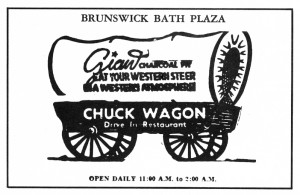
Back when I was a student, the choices for off-campus food were somewhat limited. I remember the Chuck Wagon restaurant down at a much less developed Cook’s Corner, and Bill’s “Class A” Restaurant just over the railroad tracks on Elm Street. A block or so away from Bill’s was the Deering Ice Cream shop, and farther down Maine Street was Clare’s, where Joshua’s stands today. At Kennebec Fruit on Maine Street, you could pick up cold drinks, fruit, and magazines, and if a cold beer was what you wanted (the drinking age being 18 in those days), you could head down Elm Street to the tightly packed “Hole in the Wall”—a spot once described in the Orient as “A Proletarian Paradise.” For a fancy meal, especially when parents were buying, the choice was typically the Stowe House on Federal Street.
Nearly all of these haunts are long gone, but there is no shortage of good places to eat in Brunswick today—so many, in fact, that I can’t begin to name them all. The Big Top, Henry and Marty, and the Brunswick House of Pizza (now on Maine Street), seem to be among the most popular. Joshua’s and the Sea Dog (just across the Androscoggin in Topsham) continue to be favorites for our senior class, and new restaurants seem to appear on Maine Street every few months.
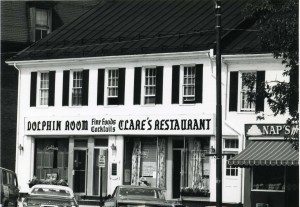
Like most places today, we are also a fully caffeinated town, with the Bohemian Coffee House, the Little Dog, Wild Oats, and The Station all within easy walking distance of campus. These are places where I can tend to my own coffee addiction and where Bowdoin students can douse themselves in natural chemicals to get through midterms and term papers. There are also specialty shops selling prepared dishes, natural and organic foods, gelato, fine wines, and even imported cigars. And one of the biggest changes is the number of ethnic restaurants in town, serving dishes from Japan, India, and Thailand, to name a few.
What we have seen in Brunswick is that when one place closes, something new takes its place. When Grand City shut its doors a year ago, the town lost a retail bonanza and a favorite lunch counter. The store has been dark for months, but it was announced just last week that the property has been acquired by a local crafts operator who hopes to open a new food counter.
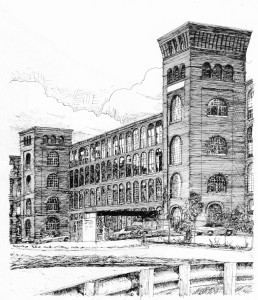
At the end of Maine Street, where the historic Cabot Mill long ago served as Brunswick’s industrial hub, the once abandoned property is today a busy center of daily activity. Bowdoin students and faculty use some of the upper floors as gallery space, and every Saturday morning during the winter months, the mill houses a farmers’ market selling organic foods and crafts made by local artisans. The Frontier Café offers good food and great views of the Androscoggin falls. Even my dentist is in the old mill.
Speaking of the Androscoggin, what a comeback story that river has been! I still marvel at the condition of what was once among the most polluted waterways in America. As a student here forty years ago, you wouldn’t go near the Androscoggin. The odor was that bad. Today, homes are being built and renovated along the river bank, smelt fishermen plunge their hooks below the ice, and boats, canoes, and kayaks ply the waterway from downtown Brunswick to Merrymeeting Bay and beyond.
Closer to campus, a tract of land that had been dormant for years is now bustling with activity. Developed by a Bowdoin alumnus, the Maine Street Station project includes an Irish pub that opened on St. Patrick’s Day, a new home for Scarlet Begonia’s, and a new visitors’ center for the Town. The project has significantly changed this area—Bowdoin’s front door—for the better. The College has a dance studio in one of the buildings and a new store—soon to be shared with Best Buy—selling our sweatshirts and gear. There are plans to build a new 60-room hotel at the top of Maine Street directly across from the campus, and just last month, it was announced that passenger rail service will be returning to Brunswick in 2012, with the trains stopping a block from campus at Maine Street Station.
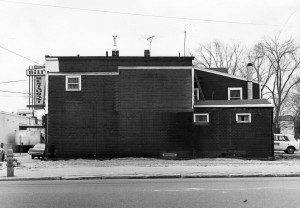
By all accounts, Brunswick is flourishing. But there are dark clouds on the horizon and a great deal of uncertainty as the Brunswick Naval Air Station closes. The lumbering P3s have already moved south to Florida, and the Navy is in the process of doing its final environmental study of the property. The Navy will leave altogether in May 2011, and town and state authorities are working hard to attract businesses to the base—a difficult task made even tougher in this economy.
The College is a major participant in these redevelopment efforts. We expect nearly 175 acres of land to be conveyed to Bowdoin, seven acres of which are located on Bath Road with the remainder on the west side of the base across from the entrance to Farley Field House and going south. The exact location has yet to be determined.
Bowdoin is working on plans for this property that will be realized over the near and longer term. We are considering moving a good deal of our Information Technology operation to the base, and we will likely build new space for Facilities Management there.
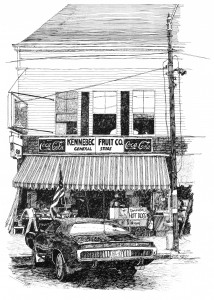
This land will be an enormous asset to the College and the community as we move into the future, but there is a real sense of loss here too. Navy families have been an important part of the fabric of Brunswick—both culturally and economically. It is regrettable that the Navy made the decision to close the base and it will take many years for the town of Brunswick to adjust to its new demographics. But we will adjust together as we always have.
The only thing in Brunswick more enduring than Bowdoin College is Brunswick itself. Settled more than 150 years before anyone thought about building a college here, this town has thrived, hit rocky times, and rebounded again and again. It is a town that keeps moving ahead with the support of the College, a growing retirement community, the arts community, and with the spirit and dedication of its citizens.
Today, in my ninth year as president, I’ve gotten used to the size of the snowdrifts on Maine Street, but this is still the magical place I remember seeing for the first time more than 40 years ago. The truth is that Bowdoin College wouldn’t be what it is without Maine and Brunswick. The College and the town are inextricably linked, and working together, I have every confidence that Brunswick will continue to thrive and prosper in the future as it has in the past.
